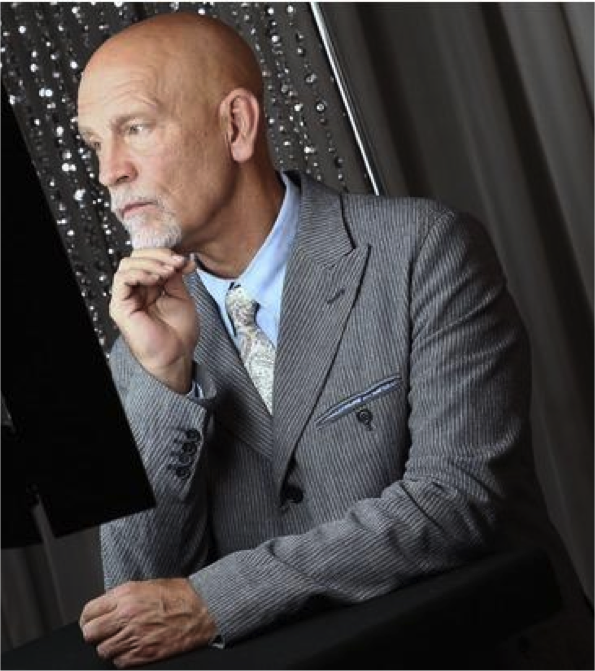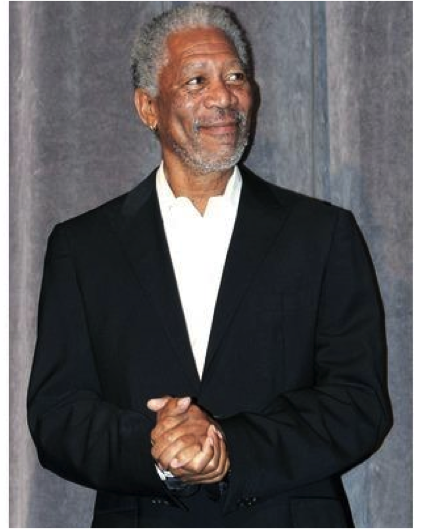“Natural theology” is a branch of theology that seeks to provide justification for belief in God’s existence without the use of scripture. It is the method that we use for this website. But how do we know when someone has established a compelling case for their viewpoint?
HOW DO I “KNOW” IF SOMETHING IS TRUE?
There is a difference between the following:
1. KNOWING – It’s entirely possible to have a personal relationship with God and to know that he exists based on direct experience but not be able to convince other people of that truth.
2. SHOWING – This is the ability to clearly demonstrate to others that there are sound reasons to believe in the existence of God.
Example of “knowing”: I could be put on trial for a murder I never committed, yet every piece of evidence that is presented to the jury indicates I committed the crime. I personally know for a fact that I’m innocent, yet I cannot show to the jury that is the case. Philosophers call the fact of my innocence a “properly basic” belief. It’s reasonable to insist that I’m innocent even though I can’t prove it to others.
PROPERLY BASIC BELIEFS: WE CAN KNOW SOMETHING THROUGH DIRECT EXPERIENCE
It’s entirely rational, based merely on experience and reason, for the average person to conclude that memories about his past experience or the external world he sees around him are not a product of his imagination, but are actually very real.
In like manner, knowledge of God’s Holy Spirit that is grounded in direct experience and reason is a very real phenomenon.
Philosophers sometimes call these conclusions based on direct experience “properly basic beliefs.”
It’s entirely reasonable to “know” something via such experience.

IS IT POSSIBLE TO “KNOW” SOMETHING WITHOUT 100% CERTAINTY?
Yes, it’s entirely possible to “know” something without 100% certainty. “Epistemology” is a discipline that studies what constitutes “knowledge” or “knowing something to be true.” The bottom line here is that you do NOT necessarily need to have 100% certainty in order to “know that something is true.”
Why is this important?
Because there are pundits who play games with this standard in order to sway the opinion of a layperson. For example, a pundit for one view could arbitrarily raise the bar of evidence and tell us that the Christian MUST provide us with 100% certainty before we can believe his arguments, while the pundit only holds his own arguments to a standard of being “more likely true than not.” Both sides of an argument should be held to the same standard.
It’s entirely possible to “know something is true” without 100% certainty
1. Certainty – We have “certainty” if there is a deductive argument that provides a 100% guarantee of truth (i.e., sure beyond “any” doubt).
2. Knowledge – In contrast, “knowledge” can occur if there is at least an inductive rationale to logically infer a probability greater than 50%. It’s a false assertion to suggest that relying on induction and probabilities means “we don’t know.” For example, if an induction provides 99% confidence, we can be sure “beyond a reasonable doubt.” “Knowledge” is accessible to us using inductive reasoning alone.
Throughout these blogs, as we present our reasoning, you will frequently hear us make the modest-sounding claim that our positions appear to be “more likely than not” or to “have a greater likelihood to be true.”
Never let anyone raise the bar and demand 100% certainty if a likelihood of “greater than 50%” is enough to establish a fact to be true. A probability greater than 50% is frequently enough to constitute “knowledge.”
PROBABILITY AND BACKGROUND INFORMATION
A probability has no relevance unless it is based on a specific set of facts, which we will call background information.
Let’s say you are trying to determine how many students at a specific college drink beer. I give you a fact to use in calculating your probability: “90% of all college students in the United States drink beer.” So in calculating the odds at this particular college, that is your only background information. Your probability would be that 90% of students at that college drink beer, or for any one student at that college that there’s a 90% chance that any one student at that college drinks beer.
Now suppose that you are trying to calculate how many students at Brigham Youn University drink beer. I give you a new piece of data that “only 15% of students at BYU drink beer.” The odds or likelihood that a given student is a beer drinker drops from 90% to 15%. The background information has changed.
Probability cannot be accurately surmised if we leave some background information out of our calculations.
For example, in evaluating whether God exists or not, many people will only focus on an objection like suffering in the world, the inability to explain God’s origin, God’s hiddenness, etc. and they will ignore the five very substantial arguments for God’s existence found on this website! Any honest evaluation MUST consider the full scope of the evidence!
A probability is only relevant in light of the background information it is based on.
So when someone gives us a probability, we should ALWAYS ask the question, “What background information is that based on?” or “In relation to what background information?” Do their calculations include every fact, or for example, are they excluding certain facts because of a presupposition that only natural explanations will be considered?

John Malkovich:
“I grew tired of religion sometime not long after birth. I believe in people, I believe in humans, I believe in a car, but I don’t believe something I can’t have absolutely no evidence of for millennia.”

Morgan Freeman:
“My belief system doesn’t support a creator as such, as we can call God, who created us in his/her/its image. Has anybody ever seen hard evidence?”
Our answer to this question would be, “Yes, we have.”

WHAT IS “SUFFICIENT EVIDENCE”?
What would we consider to be “sufficient evidence” for the existence of God? Science philosopher David Berlinski describes how subjective that standard really is:
“By what standards might we determine that faith in science is reasonable, but faith in God is not? . . . The concept of sufficient evidence is infinitely elastic. It depends on context. Taste plays a role, and so does intuition, intellectual sensibility, a kind of feel for the shape of the subject, a desire to be provocative, a sense of responsibility, caution, experience, and much besides.”
David Berlinski, The Devil’s Delusion: Atheism and It’s Scientific Pretensions (NY: Basic Books, 2009), 47-48.
Berlinski compares “faith in God” to “faith in science.” He has never seen a subatomic particle called a “neutrino,” yet there is a long series of inferences that leads him to believe it is probable that they exist:
“What I believe is a proposition, and so an abstract entity – that neutrinos have mass . . . I have, after all, never seen a neutrino: not one of them has ever gotten me to believe in it. The neutrino, together with almost everything else, lies at the end of an immense inferential trail, a complicated set of judgments. Believing as I do that neutrinos have mass – it is one of my oldest and most deeply held convictions . . .”
David Berlinski, The Devil’s Delusion: Atheism and It’s Scientific Pretensions (NY: Basic Books, 2009), 47-48.
David Berlinski uses “neutrinos,” a particle he has never seen, as an example of “evidence-based faith,” a phenomenon that he says we find in both science and religion.
Atheist Richard Dawkins rejects Berlinski’s idea that science often relies on faith founded on inference. Dawkins claims that the only kind of faith that exists is “blind faith” (i.e., an absence of evidence). Dawkins also says that this “blind faith” can only be found in religion, not in science.
However, we agree with Berlinski that evidence-based faith is apparent in both science and religion. If we asked most Christians about this, they would probably turn to Hebrews 11:1 in the Bible which says, “Faith is . . . the evidence of things not seen.” Just like neutrinos!
EVIDENCE-BASED FAITH
The Principle of Uniformity of Nature
Physicist Paul Davies states:
“Just because the sun has risen every day of your life, there is no guarantee that it will rise tomorrow. The belief that it will – that there are indeed dependable regularities of nature – is an act of faith, but one which is indispensable to the progress of science.”
Paul Davies, The Mind of God: The Scientific Basis for a Rational World (New York: Simon & Schuster, 1992), 81.
Inductive Reasoning
In any kind of inductive reasoning, there is never 100% certainty, so some degree of faith is always involved.
It requires “evidence-based faith”:
• on the scientists’ part to determine if something like neutrinos actually exist,
• on scientists’ part to trust testimony and opinions of peer-reviewed journals and experts in other fields (because a scientist cannot be an expert in every field),
• on our part to listen to the scientists’ reasoning and trust their judgment.
So regardless of protestations to the contrary by people like Richard Dawkins, faith undoubtedly plays a role in science. We call this “evidence-based faith.”

SCIENCE’S FAITH IN A RATIONALLY INTELLIGIBLE UNIVERSE
Physicist Albert Einstein, who said he believed in “a spirit vastly superior to that of men,” provided support for this idea of evidence-based faith in science. As an example, he cites his belief in a rationally intelligible universe:
“Science can only be created by those who are thoroughly imbued with the aspiration toward truth and understanding. This source of feeling, however, springs from religion. To this there also belongs the faith in the possibility that the regulations valid for the world of existence are rational, that is, comprehensible to reason. I cannot imagine a scientist without that profound faith. The situation may be expressed by an image: science without religion is lame, religion without science is blind.”
Max Jammer, Einstein and Religion (Princeton: University Press, 1999), p. 94.

Mathematical physicist and Nobel laureate Sir Roger Penrose comments on the mysterious manner in which superb laws of nature and mathematics have coalesced:
“It is hard for me to believe . . . that such SUPERB [sic] theories could have arisen merely by some random natural selection of ideas leaving only the good ones as survivors. The good ones are simply much too good to be the survivors of ideas that have arisen in a random way. There must be, instead, some deep underlying reason for the accord between mathematics and physics.”
The Emperor’s New Mind, Vintage, 1991, p. 430 as found in John Lennox, God’s Undertaker: Has Science Buried God? (Oxford: Lion Books, 2009), 61.

Oxford theoretical physicist John Polkinghorne said:
“Science does not explain the mathematical intelligibility of the physical world, for it is part of science’s founding faith that this is so.”
John Polkinghorne, Reason and Reality (London: SPCK, 1991), 76.
INFERENCE TO THE BEST EXPLANATION
This is a method of scientific and historical inquiry in which there are competing theories to explain observable data. Scientists or historians infer which explanation would be most credible based on the facts available to them and an objective set of criteria for comparing theories.
So the scientist or historian would first identify a pool of live options (possible theories to explain facts or observable data). He or she would then apply a set of objective criteria to determine the “best explanation.” These are the criteria:
1. Explanatory Scope: Which theory explains the most facts or the widest range of observable data?
2. Explanatory Power: Which theory makes the data more probable than the others do.
3. Plausibility: The degree to which “accepted knowledge” (i.e., includes background knowledge and the specific set of facts about this case) implies the truth of a hypothesis versus the degree to which it implies the negation of that hypothesis (i.e., its falsehood).
4. Less Ad Hoc: Which theory is less ad hoc? “Ad hoc” refers to a theory for which there isn’t any independent evidence or reasoning to believe that it’s true, and instead you must contrive or invent a hypothesis just to explain a set of unsupported facts.
5. Accord With Accepted Beliefs: In weighing any theory that tries to explain a set of facts, the best theory is one that contradicts fewer accepted beliefs. For example, two historians try to figure out how I got to the branch of a tree that was 100 feet in the air. One historian says that I jumped that high. The other says I climbed. The theory that suggests I jumped contradicts widely accepted belief that a man can’t jump 100 feet in the air.
6. Comparative Superiority: The theory exceeds its rival hypotheses in meeting the five criteria mentioned above.
EVOLUTIONARY THEORY: EXAMPLE OF “INFERENCE TO THE BEST EXPLANATION”
The neo-Darwinian theory of biological evolution is an example of “inference to the best explanation.” It uses this same process. Proponents say it is the best explanation in terms of explanatory scope, explanatory power, plausibility, accord with accepted beliefs, etc.
Critics say that the pool of live options is arbitrarily restricted by an unjustified methodological constraint of only considering natural explanations, and supporters of the theory do admit that they’ve constrained the pool to naturalistic hypotheses. If that is true, it would be an example of “circular reasoning” or “begging the question” where a person simply assumes that a supernatural explanation is impossible as part of their rationale for only allowing naturalistic explanations.
Regardless of what you believe on this issue, evolutionary theory is an example of “inference to the best explanation” methodology.
Incidentally, we will not address evolution in any of these lessons as an evidence for or against God’s existence. It is the opinion of this website that you can believe in evolutionary theory and believe in God. You can believe in evolution and be a Christian. The theory of evolution will not be a factor in our discussion of God’s existence.

VERIFICATIONISM
Must I See It To Believe It?

In 1748, Scottish atheist philosopher David Hume, an early proponent of book-burning, said:
“If we take in our hand any volume, of divinity or school metaphysics, for instance; let us ask,
• Does it contain any abstract reasoning concerning quantity or number? No.
• Does it contain any experimental reasoning concerning matters of fact and existence? No.
Commit it then to the flames: for it can contain nothing but sophistry and illusion.”
David Hume, An Inquiry Concerning Human Understanding, ed. by Tom L. Beauchamp (Oxford: Oxford University Press, 2000) 123.
Note: ” Abstract reasoning” is “self-evident truth” (true a priori or true by definition.) “Experimental reasoning” is a posteriori direct experience with the facts. “Sophistry” refers to false arguments that are intended to deceive.
Do you remember that we said a premise is true if it contains “self-evident truth” (a priori logic or true by definition) or we have direct experience with the facts (observation)? Well, David Hume was saying that any assertions other than these two types of facts were meaningless and should be discarded as untrue.

1. The Verification Principle
Two centuries after Hume, British philosopher A.J. Ayer started a movement called Logical Positivism that turned these two conditions by David Hume (self-evident truth and direct experience with facts) into what Ayer called the “principle of empirical verifiability,” and dominated the field of philosophy until the 1960s.
2. The Falsification Principle
In addition, a statement was also supposedly meaningless if it was impossible be tested and was proven false. Logical positivists said, “What is unfalsifiable is unscientific.”
It would be impossible to prove that unicorns never roamed the earth (i.e., unfalsifiable, so an unscientific claim). But if you tell me you have a unicorn in your garage, I could look in your garage (i.e., falsifiable, can be verified).
PROBLEMS WITH VERIFICATIONISM
Verificationists ran into two big problems that caused Logical Positivism to fall into disfavor in the 1960s:
1. If they applied their verification requirement to all areas of life, it would consign vast swathes of scientific knowledge to the trash heap of “meaninglessness.”
2. The two principles were self-refuting. Ask yourself if the “verification” and “falsification” principles themselves are:
a. empirically verifiable?
b. falsifiable?”
Because we could never do enough research to prove it, these two principles themselves are impossible to verify or falsify!
So must I see it to believe it? Is every assertion false unless it is empirically verifiable or true by definition? The answer is, “No.”
Conclusion: Hume’s two types of facts are not the only reliable or meaningful information available to us! Verificationism has largely fallen into disfavor since the 1970s!

